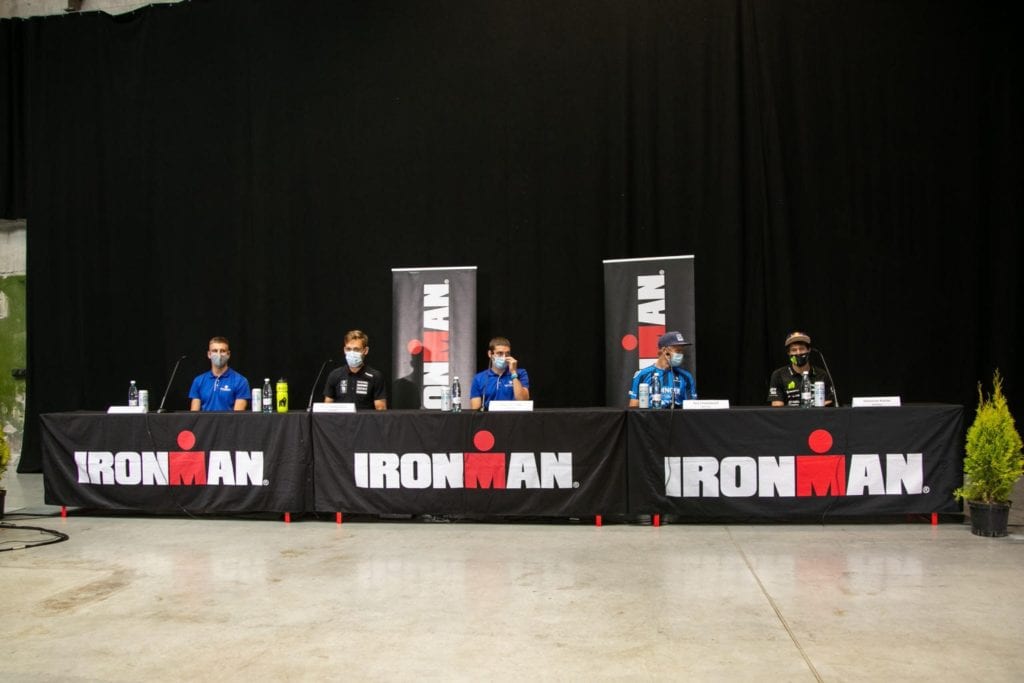Kienle’s frank (and funny) Davos recap, and Tallinn preview
Always one of the sport's best interviews, Sebastian Kienle was at his best today at the Ironman 70.3 Tallinn press conference
 Photo by:
Gertrud Alatare/Ironman Estonia
Photo by:
Gertrud Alatare/Ironman Estonia
Sebastian Kienle is trying it again. After lining up at Challenge Davos last weekend (before the race was cancelled due storms), the 36-year-old German will race the Ironman 70.3 Tallinn (formerly Otepää) on Saturday, Sept. 5.
How was racing in Davos?
It was horrible. It was like meeting your crush from high school, and she’s the most beautiful woman in the world, and then you’re having dinner with her, you think “oh, nice, I’m dating her,” but actually no, you’re not. She’s just leaving when you go to the toilet. That’s how you feel. You get excited about the race, and then you realize it’s not gonna happen. And it’s really bad, even worse than not having a race at all.
But this Saturday, you’ll have another crack at that date, won’t you?
It will be the second chance to meet her and finally put a ring on her finger, that’s the plan for Saturday. Here’s what I hope: First that the race is gonna happen, that we’re all gonna finish, everybody stays safe, and I want to be as good as possible. That’s why we train and race. I’m a bit behind because I broke my collarbone two months ago, and especially on the TT bike, I’m still struggling a little bit, and this race is 99 per cent on the TT bike. But I’m just happy to be able to race.
The bike is still your strength. How is the bike course in Tallinn?
If you ride easy, a hilly course is always more difficult. But if you want to go fast, a flat course can actually be more challenging than a hilly course because you have to be continually pedalling and constantly putting out the power numbers. Therefore, it’s much more challenging for many people to ride a fast course because you need to be in the aero position all the time and constantly push the power on the pedals. Let’s find out on Saturday. A lot of people were active on Zwift this year, and this is actually like a Zwift race.

How was your first flight since March?
The crazy thing is that I’ve been a professional athlete for more than 15 years. I’ve been used to be on the road for more than 180 days, and you’re used to the constant push of adrenaline to go to the next place and race. And then you spend all those months at home, and it can be quite depressing. In the beginning, I really loved it, and it was good to do some work around the house, but at one point, you get itching and want to be on the road again. It was nice to be able to travel again.
How were the safety procedures during the flight and at the registration?
We constantly checked the list of European countries and their infection rates per 100,000 people [requirements from the Estonian Minister of Foreign Affairs]. We know Germany would have been close or above 16 [the threshold to above which Estonia required self-isolation upon arrival for people from those countries], but last Friday, we got the news that with a double negative test (one at home 72 hours before your travel, and one in Estonia after landing), we would have been free to travel and race. The procedure was pretty smooth, we only waited 20 to 30 minutes, but we had the result the day after we arrived. It added more cost to the trip (200 euros per person). Still, everybody is just happy to be able to race, and I have a lot of respect for the people who managed to organize this event. It’s easier to cancel an event, but with the right safety measures in place, it’s still possible to race, and that’s what we try to do. Make life as normal as possible, without sacrificing the safety measures.
